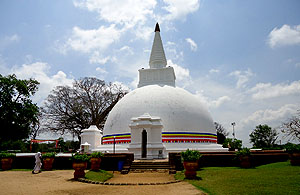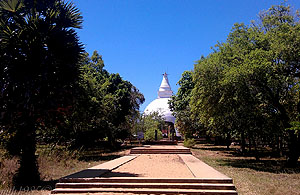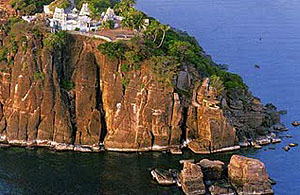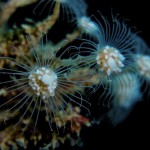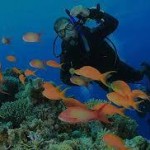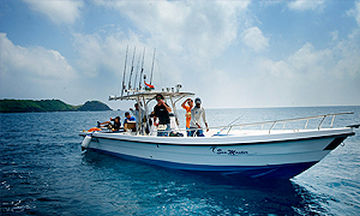
Squid Fishing Expedition
The sea off Uppuveli abounds in marine life with squid fishing being one of the top specialties of the area. You too can join the local fishermen and venture in a nocturnal squid fishing expedition. The motor boats leave the shore moments before nightfall. Equipped with artisanal gas-powered lamps and fishing nets…
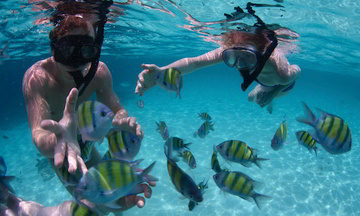
Diving in Trincomalee
Trincomalee (‘Trinco’), is a prime eco-tourism area located in the north-east coast of Sri Lanka and boasts a number of attractive beaches in locations such as Uppuveli (where Amaranthé Bay is located) and Nilaveli. Trinco is also famous as one of world’s largest natural harbours…

Transport to Cultural Sites
Pampering that travel bug in you, we are more than delighted to organise custom-made tours, thus enabling you to explore, discover and enjoy the multi-faceted variety Sri Lanka has to offer. Travelling north from Uppuvili is the famous Nilavali beach.
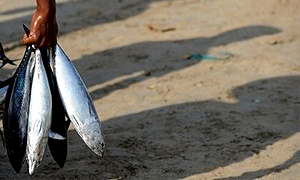
Trincomalee Fish Market
During your stay with us, it is well worth visiting the Trincomalee Fish Market with its 50+ stalls and frantic, noisy activity that begin as early as 4.00 AM, every day of the week. Fish, freshly caught from the East Coast is hauled in here, sorted, cleaned, priced and readied for dispatch to various parts of the country including the South, at times.
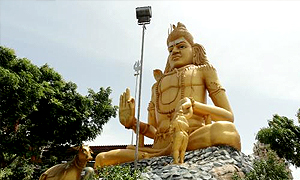
DAY TRIP to Koneswaran Temple
The Fort has literally been the Jewel in the Crown of Trincomalee since it was built by the Portuguese way back in 1623. Two decades later the Dutch captured the Fort from the Portuguese and handed over to Rajasinghe, King of Kandy whereupon he built a fort there.

The Salli Kovil
The Salli Kovil also known as Muthumariamunam Kovil is at the northern end of the Uppuveli beach, a mere walking distance from Amaranthé Bay across the Pillaikulam Aru river. It is an important temple to the local Hindus, who regularly visit it for prayers and hold colourful festivals.
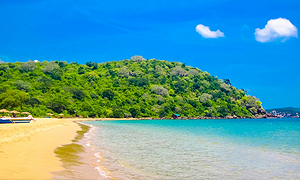
Marble Beach
One of the most magnificent beaches on Sri Lanka’s East Coast is the Marble Beach located deep in Trincomalee where the water is as clear as glass. This particular stretch of water looks like marble when seen from above and hence its name.

Commonwealth War Cemetery
It is worth walking up to the very well maintained Commonwealth War Cemetery, a graveyard for British servicemen, who died in Trincomalee during World War II. Located on a hillock just behind the ‘Amaranthé Bay’…
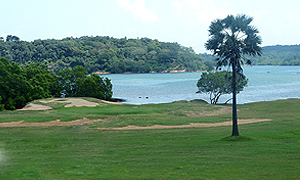
Eagle’s Golf Links
Nearby, at the China Bay are the Eagles’ Golf Links, which overlook the scenic Clappenberg Bay and Malay Cove, and are a 15-minute drive from the pristine Marble Beach.
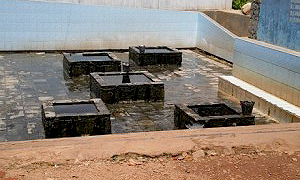
Hot Water Springs
Kanniya Hot Springs is famous hot well in Sri Lanka from the past. There are seven wells in a square shape. Wells are only 3–4 feet deep and you can clearly see the bottom. The temperature is considerably high but vary from one spring to another. Wells run out of water, when 10-15 buckets of water are taken out.
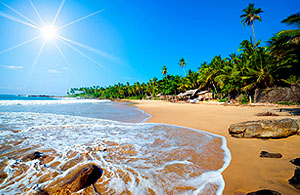
Pasikuda
Pasikuda has become a popular tourist destination amongst locals and foreigners alike. This is because Pasikudah is known to have one of the longest stretches of shallow coastline in the world. In other words, people walk kilometers into the sea…
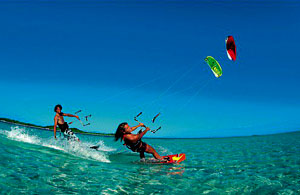
Arugam Bay
Arugam Bay is a bay situated on the Indian Ocean in the dry zone of Sri Lanka’s southeast coast. The bay is located 320 km due east of Colombo. “Ullai” as Arugam Bay is locally known is a popular surfing and tourist destination.

Whale Watching
Recent data (especially from the Sri Lankan Navy) points to a commercially feasible strike rate for whales which extends Sri Lanka’s Blue Whale watching season from May to August off Trincomalee. This over-turns the prevailing view that the Blue Whale season finishes in April.
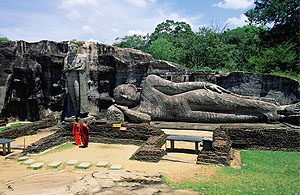
The Gal Viharaya
The Gal Viharaya, is a rock temple of the Buddha situated in the ancient city of Polonnaruwa in north-central Sri Lanka. It was fashioned in the 12th century by Parakramabahu I. The central feature of the temple is four images of the Buddha, which have been carved…

Girihandu Seya at Thiriyai
Situated about 48 k.m. north of Trincomalee, ‘Girihandu Seya’ located at Thiriyaya (Thiriyai) is an important historical place of worship for Buddhists. An 8th century Brahmi epigraph found at the site refers to a shrine named ‘Girikandicaitya’…




